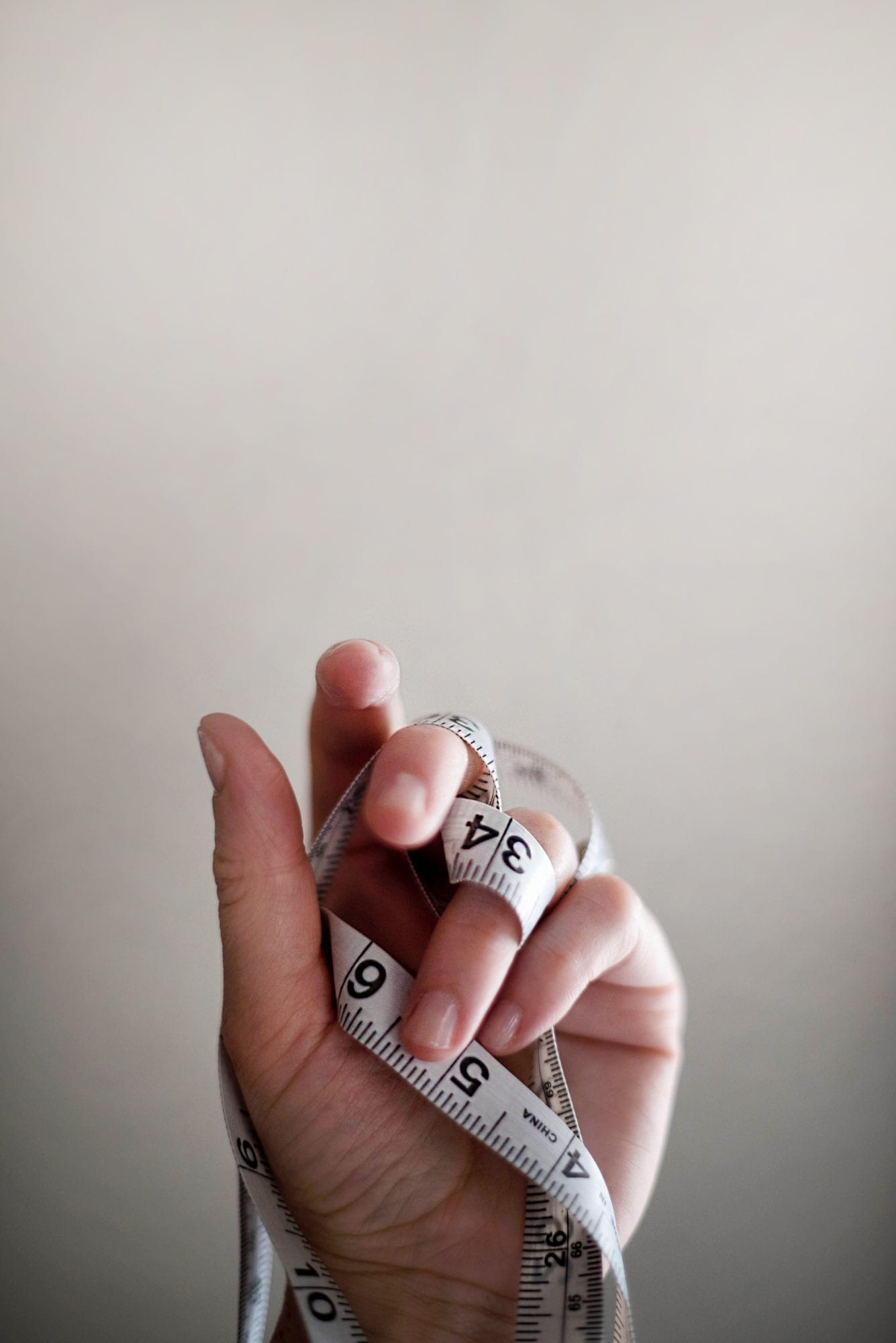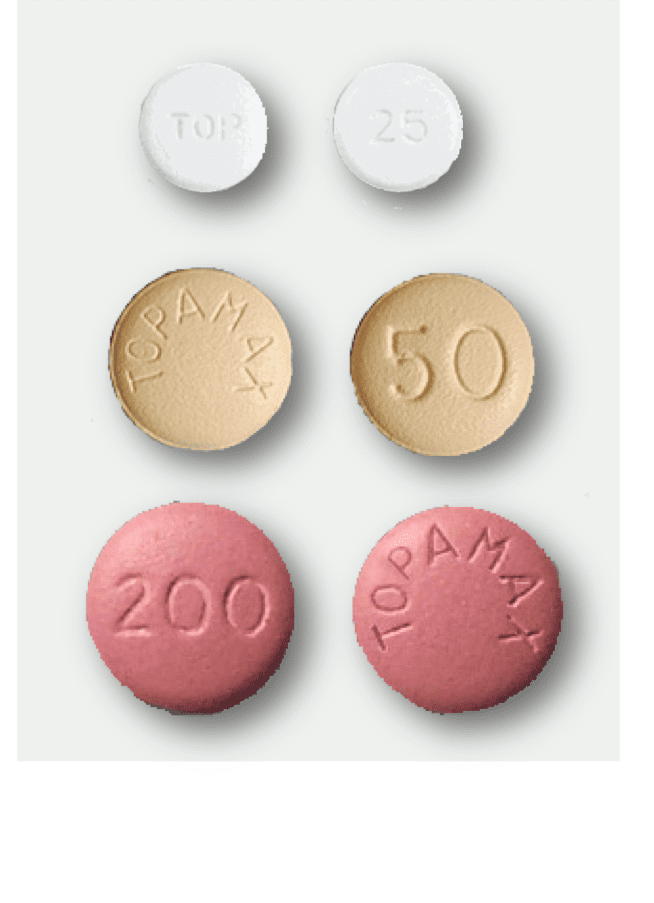The results are in from an anonymous survey of 1,107 respondents who had a daith piercing for migraine. They were asked 3 simple questions:
- How long have you had a daith ear piercing for?
- How has your daith piercing affected your migraine frequency?
- How has your daith piercing affected your migraine severity?
This is part 2 of a two part article on Daith piercings. To read the first article about Daith piercings, the background, expert commentary and more. Read the article here >>
I’ve included several charts and results below for those who want to see the raw data. If you just want the quick answer about whether daith piercing will actually help your migraine condition these are the topline results:
Contents
How did the daith piercing affect migraine frequency?

Just over half of all those who had a daith piercing (64%) experienced a reduction in migraine frequency. The remainder stayed the same or got worse. Below is a the breakdown of those who reduced their attacks:
- 15% reduced their attacks by approximately 10-50%.
- 7% of people reduced their attacks by half.
- 24% reduced their attacks by more than half.
- 18% of people experienced a full remission in migraine. i.e. it eliminated their migraine attacks.
The most common response was a reduction by over half in migraine frequency. This group represented 24% of all respondents.
Some people also worsened.
5% of people experienced an increase in migraine frequency since their daith piercing.
Whether this is due to the piercing itself, other factors or a combination was not explored in this survey. See the limitations section below.
How did your daith piercing affect migraine severity?
66% of the respondents reported less severe attacks (rounded to the nearest percent).
- 21% reported ‘somewhat’ of reduction in their migraine severity.
- 31% found their migraine severity had ‘reduced greatly’.
- 14% say they no longer experience migraine attacks at all.
Interestingly 29% of people stayed the same with no change.
5% of people found that the pain and disability from migraine attacks had increased.
WARNING: Before you leave with the summary… be warned, these results can be misleading!
A big factor in the results is how long it had been since a respondent had their daith piercing.
How Long Have You Had The Piercing For?
Below is the how long each respondent had their piercing for:
The group which had only had the piercing for less than a month had a high number of people who had completely eliminated their attacks at 25%.
Going a month without migraine is a fantastic result for many people. But it’s not the same as going without migraine for an entire year. This is what happened as time goes by:
- 21% had no further migraine attacks within 1-2 months
- 17% had no further migraine attacks within 2-3 months
- 13% had no further migraine attacks within 3-6 months
- 9% had no further migraine attacks within 6-12 months
- 16% had no further migraine attacks within 1-2 years
- 31%* had no further migraine attacks for those who had the piercing for 2 years or longer. *It should be noted however that the sample size is small in this bracket. There was only 12 person out of 39 (i.e. 31%) who experienced no attacks since they had the daith piercing at the 2 year or longer mark.
A similar trend emerges with the rest of the results. The more recent the piercing, the better the results tend to be. Below is the migraine frequency and severity at 2-6 months.
3-6 Months After The Daith Piercing
Migraine frequency:
Migraine severity:
3-6 months after the daith piercing:
- 35% of people stay the same.
- 3-4% get worse in either migraine frequency and/or severity.
- Over half improve in both frequency (61%) and severity (62%).
During the 3-6 month period results are good with 61-62% experiencing improvement in both the frequency and severity of migraine.
6-12 Months After The Daith Piercing
At the 6-12 month mark… we start to see the a bit of honeymoon trend wearing off. Slightly fewer people sustain the initially positive results.
Migraine frequency:
Migraine severity:
6-12 months after the daith piercing:
- The number of people who experience complete elimination of migraine frequency has dropped significantly from 13% in the first month to 9%, 6-12 months after the piercing.
- An interesting discrepancy has also arisen in the data (which was triple checked) that shows 7% of people experienced an increase in migraine severity compared with only 1% increase in frequency.
- This suggests that whilst people’s frequency of attacks haven’t dramatically increased, for 7% of people the severity has worsened.
- Slightly more people stay the same in terms of migraine frequency (40%) and severity (38%) at this point.
- Over half of respondents are still better off with 58% of reporting improvements in frequency and 55% reporting a reduction in severity.
What about longer term? What happens after 1 or 2 years?
One Year (or More) After The Daith Piercing
Migraine frequency:
Migraine severity:
Results 1 year or more after the piercing:
In the final group it is interesting to note what happens to the results.
- 28% experience no change to their migraine frequency
- 24% experience no change to their migraine severity
- 7-9% get worse with either more frequent or severe attacks (or both).
- Still over half the respondents maintained their improvement with 64% reducing frequency and 67% reducing severity of attacks.
- Perhaps most surprising is that 18-20% have completely eliminated migraine i.e. are in full remission.
Limitations of this research
This research was conducted as an informal and anonymous poll. As such there are many limitations:
- There was no control over who was selected and who wasn’t. It was open to anyone who wanted to help provide answers for others considering this treatment option. As such there could be a bias towards successful participants wanting to share with others versus those who didn’t get results and had moved on.
- The number of daith piercings was not asked. We do not know whether people had one ear or two ears with a daith piercings.
- Adverse events, side effects, poorly inserted piercings, infections etc were not accounted for or recorded. These may have influenced the results of some people.
- How much change in migraine frequency or severity that is solely attributable to the daith piercing was not measured. Some people may claim to have experienced their results entirely from the daith piercing, others may have combined the piercing with other treatments and for others there may be a placebo effect.
A Migraine Clinic’s Study of the Daith Piercing [Findings]
The largest study outside of our community has been run by the London Migraine Clinic under the research guidance of Dr Chris Blatchley.
They found that:
- Surprisingly, the effects of the daith piercing appear to be quite resilient and they did not find very sharp drop off’s after a particular point in time.
- 60% of those who had a daith piercing over a year ago report no drop-off in effect.
- The daith piercing doesn’t appear to work in around 15% of migraine patients although it is not clear how strong the self-selection bias is. This group could be underrepresented.
To take their more detailed daith piercing survey, visit https://migraine-piercing.co.uk/
Conclusion
Evaluating the true effectiveness of the daith piercing requires a well designed, double blind placebo controlled clinical trial. This does not attempt to be a comprehensive or conclusive report, but perhaps something helpful whilst we await the clinical trial.
Based on the data collected from 1,107 responses, it appears that the daith piercing shows good potential. This is especially so in the early months after the initial piercing and after one year. For this reason it could be considered a worthwhile tool to help break the cycle of chronic attacks.
In the long run people seem to consolidate into a positive or negative path. There were fewer people “in the middle” who didn’t change. Most people either improved (64-67%) after one year or got worse (7-9%).
In an earlier edition with 380 respondents, after 1 year around 20-30% of people experienced improvements. The conclusion therefore was that a daith piercing can help break the cycle of frequent attacks but you may need something more to sustain your improvement over a longer period. Interestingly, with 1,107 responses this no longer appears to hold true. People appear to make good progress overall with the daith piercing.
Whether people use the daith piercing as a kick to improve other areas of their lifestyle that affects there migraine condition like sleep, diet, exercise etc. remains unknown.
There have been concerns raised about the potential for things to go wrong with a daith piercing.
Ear piercings require no medical qualifications from practitioners. There is a risk that the area of the piercing can get infected, damaged or the piercing can be made in the wrong position. Like other treatments, these are risks or potential side effects which need to be considered before making a decision.
Some people may also argue that there is a strong placebo effect which may explain the strong early results that you’ve probably seen on social media. This is certainly a very real possibility. However it is worth mentioning that, placebo or not, the results are there.
The results are very encouraging, but in reality it is hard to really know for sure because people generally prefer sharing good news rather than bad news. The self-selection bias is creates a problem for reliable data. A more robust clinical trial is needed.
Let me know what you think in the comments below. If you have any questions regarding the charts please ask in the comments to receive your answer.


















The best decision I made getting the daith piercing. I’ve had it now for 5 months and only had one attack. That’s better than twice a week previously.
That’s an amazing result Sharon, congratulations!
Finally a bit of research, I have heard so many things good and bad about the piercing. I’m still very wary of trying it. Don’t think it is worth trying if it only works for a couple of months. I’ll stick with my irlen lenses.
I hope this makes it a slightly more informed decision for you Georgina.
The research is very interesting but I think I’ll stay away from Daith for now.
Congrats to all who have had freedom from pain. I hope it continues
Glad you found it helpful.
Thank you for doing the research and for people volunteering the information. It’s not for me now, but you never know about next year.
Well said Andrea.
I have had my daiths done but didn’t do the survey as I started taking amitriptyline about the same time. I haven’t had a seizure since doing both of these for 6 months which is good news and I used to have a couple of seizures a month and the seizures were getting worse until I done this.
Great result Jennifer! I’m so pleased to hear about your improvement.
Now this is amazing. Some real people telling us their results. Thanks Carl. It makes me wonder (I have also written an article on daith piercing for migraines) with my previous studies into acupuncture, and the 2-6 weeks (assumed) duration of effectiveness for using this "point" – if using real/actual acupuncture sub-dermal studs on actual migraine points would be a better alternative.
Thank you Holly. I think sub-dermal studs would be very interesting. In fact that may be what I’d try first.
I’ve had my faith piercing for 3 weeks. I have daily severe migraines now for over 27 years. I consulted with 3 very knowledgeable acupuncturists prior to having my piercing done by a very reputable piercer in Elgin, Il. My Accu said there are no acupressure points in this area of the ear. The piercer agreed and did not recommend the piercing for the relief of migraines. I am desperate and thought what could it "hurt" besides the actual piercing. Although, initially painful, after the first few days, I was able to sleep on it and didn’t really have much discomfort. But, my migraines have continued to be daily, severe. I hope others continue to have relief from migraines. I was impressed by my piercers’ skill, and sterility of the tattoo shop, and I like the look of the piercing! But no major miracle here, but I’m still hopeful!
Thank you for sharing Anita! It really helps to hear a balanced perspective. It seems that we only tend to hear about the "miracle" results on social media.
Hi Anita, I’m in the same boat, and might I recommend a book: Heal your Headache, a 1-2-3 method approach. It seems to be the migraine bible, and it’s helped me more than anything. Also, there’s a Facebook support group that’s been invaluable "Heal Your Headaches – Migraine Diets" I hope this helps, good luck.
Thank you for the survey results I have been considering doing the piercings for some time now .I have heard great reports from those I have spoken to or heard about indirectly. My GP also suggested it herself 3 mths ago and told me to do some research. I am in two minds still ,I have an appointment both with my GP and to have the piercings done next week. I will be doing both ears if I decide to go with it.
Hi Helene, see Holly’s comment above. It may be worth looking into sub-dermal stud(s).
Thank you so much for your time and effort in analysing the results, Carl! Very helpful!
My pleasure Janine, thank you.
Thank you so much for the research and information….I have been considering a daith piercing to help my weekly migraines. Now I have something to base my decision on
Thank you Gilian, I’m glad you found it useful.
I have daily migraines and am considering getting it. Is there an exact spot to show the piercer and is it in one or both ears?
Hi Angela, there is a precise spot which you can google. Ideally the piercer is familiar with the spot. People tend to start with the side on which they experience the majority of their attacks. You can get both done.
Thank you Carl for conducting the survey and for analysing and publishing the results. Much appreciated.
My pleasure David, thank you.
Carl, thank you for that information, but given the long term effects I personally don’t see a real positive outcome.
On another possible "cure" do you know of any research that has been done on the effects of Botox?
I had a neurologist try talking me into it the other day, I will never use it because of side effects, but I am interested to know how it has worked for other migrainuers.
Thank you
Wanda
Hi Wanda, there is an article I’ve written about Botox here: https://migrainepal.com/botox-for-migraine/
I took two rounds of the Botox injections several years ago. The injections didn’t work for me. I had severe migraines after the first round, which didn’t improve after the second round. I refused the third round.
I eagerly await a study with competent methodology, adequate blinding and of course a plausible mechanism of action.
Me too. In the meantime this is the best we have.
I have experienced migraines for 35 years but they have increased in frequency over the last few years (probably due to hormonal changes). I was very sceptical but felt I had nothing to lose so had both daiths pierced about 5 months ago. I am not migraine free but my migraines have reduced in number & severity and my medication seems to work quicker. I hope it continues to work but if it doesn’t I am grateful my migraines have not been such an issue for these few months.
Tulah, I’d love to hear how you’re progressing now. Are you still seeing the same result or have things changed?
Interesting study. As an acupuncturist I have to agree with Holly who pointed out that a temporary or semi permanent needle would be a far better option since the results appear to wear off over time. Once the hole is in your ear there’s no using it again!
I agree. I like the idea of a temporary or semi permanent option. Especially considering that the best results tend to be within the first year.
Hi
I had my left daith pierced 5th July 2016 and I use Migraine Buddy to track my migraines, I can certainly see a reduction in the intensity of the migraines and I have only used my abortives twice, normally I would be using all 6 of my allocated sumatriptan a month, I also see a reduction in the amount of time I have a migraine for as well, I am hoping that the effects are long lasting but if not at least I tried and got a cool piercing out of it if not, I have suffered with migraine since my early teens and am now 46. I went in with the attitude that if it worked great, if it didnt thats ok I got a cool piercing.
Great attitude to have. I would try to use this time to really get on top of your condition. Rather than rest on your laurels, look at what else you can do to help build your resilience and protect against migraine… simple things like clean diet, sleep routine, exercise, meditation/relaxation, better trigger management, etc. These things can help create a permanent reduction in your condition whilst you have the upper hand!
I still think it’s the placebo effect.
This brings up an interesting thought experiment: if you knew 100% that a treatment would help -but there was also a good chance it could be a placebo, would you still try it?
Placebo gets a bad rep, but it can be incredibly powerful from a therapeutic perspective. If the patient enjoys a positive response, does the means (placebo) justify the end?
I’m not saying the daith piercing is such a treatment, nor am I encouraging doctors to mislead patients with placebos… I just think it’s interesting how expectation and attitude can lead a powerful physiological response.
I was getting almost daily severe attacks. Went in with a migrain,had the piercing and came out without one. Really thought I’d cracked it but 3 weeks later I started with them again though not as severe or as often. I am taking many different supplements so maybe they are helping too.. Also doing daily neck and shoulder exercises. I’m glad I’ve had it done as I would always wonder if it would be the miracle cure
When you’re doing multiple things at once it is hard to know which is helping… but if you’re getting results that is what matters most.
Most people should expect progress to be 2 steps forward, 1 step back. But the important thing is that you are making progress. Congrats Babs!
I had my daith pierced at the beginning of August – having just come out of a 5 week migraine that almost took me down. Since having it done I have not had my normal migraine – no actual head pain. I have some of the other symptoms, such as the tender eye, tenderness around my eye and forehead – not even had sickness! I feel it has worked for me and for the first time in a long time I have got my life back under control. My migraines were lasting longer and longer – 5 weeks was quite a short time span for me. We have an allotment and I was afraid to go down and be on my own in case I was unable to get back home. This has been life changing! Long may it last but I am enjoying what I have now. I have also started to take magnesium (approved by my Neurologist) which I feel has also helped.
Fantastic progress. I hope it continues! Magnesium, particularly chelated magnesium has been shown to be helpful for a significant no. of people with migraine. Good luck.
If it doesn’t work, or makes it worse, can you remove it and lessen the adverse side affects ?
That’s a great question. If a trigger point is pierced with a hole for a stud or earring, can it fully heal over time?
I know that the hole is likely to close up again… but what happens to the nerve(s)? Do they fully regenerate? I don’t know. Best to ask a qualified professional.
I’ve had mine for 4 months and have had 2 migraines (one was because I cried for 4 hours so that was expected)
Before I would have them at least 2x a week, and that’s IF I could get rid of them. I’ve had a few migraines that last 3 weeks.
Fantastic TJ!
I tried the stud from my acupuncturist twice for a total of a month and did not experience any improvement. However, my acupuncturist stated that since my migraines are not digestive related I might notsince that is the acupuncture point. Your article reinforces that point.
Good to hear you tried the stud before going with the piercing. Interesting to hear the acupuncturist connect the daith pressure point with digestion.
Hi, I had a neck surgery, replaced discs C5/6 and C6/7 in 2012. Afterwards I had experienced headaches almost as bad as before the surgery. I had the piercing done last year April, one year afterwards and my headaches are limited to when I’m struggling with sinusitis. Other than that no headaches at all. The piercing has changed my life!
Wow, fantastic result Liesel!
I am almost at my 1 year mark and I still think it is helping with the severity. It has never helped with the number of days I get migraine.
Thank you for sharing Wendi! It’s great to hear from people who have had the piercing for a significant period of time.
I’ve had a daith piercing for a year now and am sad to say I’m in the 50%that haven’t experienced a difference in frequency of migraines 🙁 mine are hormonal and also I think I may have Irlen Syndrome which would explain the migraines if I’m on my iPhone too much or in strip lights. Any ideas on this? This is a fascinating article. Thank you.
Hi Jo,
I went to Irlen and found it expensive and relatively unscientific in their process. I’ve found much better results using migraine specific lenses which has been scientifically proven to help migraine patients who are sensitive to light.
I’d lookup Axon Optics and/or Theraspecs which make migraine specific lenses and frames.
I’ve had wonderful results with Occipital Nerve Blockers. About a year ago, I started getting the injections every 6-8 weeks. They severely reduced the frequency and intensity of my migraines and my migraines became receptive to Aleve. I got the injections 4 times before the neurologist told me I probably don’t need them anymore. I went with one more round to be on the safe side, but I don’t anticipate having to schedule the procedure again for the foreseeable future if at all. I went from migraines that lasted for days at a time that occurred about 1/3 of the time, to briefer headaches that I can usually treat with Aleve.
That’s great Jen, thank you for sharing your results.
There are so many options for us which aren’t necessarily medicinal pills.
There are several typos and grammatical errors in this page. You need a proofreader.
PS Feel free to contact me if you would like to employ a proofreader for anything you need to publish. Errors and typos are irritating and can cause the reader to wonder about the veracity of the findings if so little care has been taken with the published article.
However, I did otherwise find this article very useful. Thank you for the research and for publishing it. .
Thank you for the feedback Carmen. I’ll get someone onto this.
Of the people whose migraine situation worsened after the piercing, were any able to reverse that degree of worsening by taking out the earring and letting the hole heal? If so, what percentage of those people experienced such reversal?
Great question Teresa, this is something that I didn’t ask as I wanted to keep the survey short and simple for people to do.
Perhaps with more attention and funding some more detailed research can be undertaken.
I was thinking about getting a daith piercing for my migraines but when I researched it I found some surprising data. first, ear acupuncture also called auricular therapy is not Chinese medicine. it was invented by the French? who would have ever thought that. when I ask a local acupuncturist if the piercing would help he told me maybe, but most likely not. I didn’t have a good feel about him. I want to get it but not sure here is the best place to get one. I live 30 miles east of buffalo New York. Please anyone have a good shop in that area of the country?
Gayle
I don’t know personally Gayle but I think your right to trust your "gut" feeling if you get don’t get a good feeling from a place. Good luck and take care.
I was having 4-5 migraines a week and decided to go to my favorite tattoo shop and ask about the daith piercing for my migraines. So Rick took me back and did my left side first off since that was side that gave me most problems. Still had a headache now and again but it did help. So went in again and had Beth do my right side since the headaches weren’t gone. Got that done and since then no migraines nor a headache. It has been 2 1/2 months. It has been heaven without those little buggers everyday. So for me it helped but I needed both done. Good luck
I am 58 yrs. old and have had Migraines since I was 5 Yrs.old, The Daith piercing I had about 2 yrs ago is no cure by any means, however, it has been the most promising thing for migraines I have ever done, I has helped tremendously with frequency of the migraines for sure, I ‘ve been to specialist, ever medication you can think of , Botox, but the Daith piercing was the best thing for me.
Very interesting Fern, thank you so much for sharing! Hope your condition continues to improve.
Take care,
Carl
I also have severve daily migraines and I’m considering this. With everything else I have tried what do I have to loose. I have been thru operations and botox and everything under the sun
A good way to test if you’re not ready for the piercing is visiting an acupressure practitioner who can find the spot and put in a temporary stud in place. Remember piercing parlours are not medically trained.
Take care,
Carl
I have only had mine for 2 weeks, but have had zero attacks so far, whereas I was experiencing severe headaches 2-3 x/week and migraines 1 every 1-2 wks for 9 months before that. After experiencing what Topamax did to me, I was willing to try most anything b/c I felt if it doesn’t work, I can remove it. I told my son "it may be the placebo effect" and his response was "whatever it is, it’s working." I feel like a different person.
That’s great Tina, I hope the great results continue I’d love to hear back from you in a few months to see how you’re going and whether you’ve remained migraine free.
Take care and all the best!
Carl
Do not get the daith piercing. Had both ears done for migraines and one became so infected that I have been seeing several doctors for 4 months. I took care of the piercings, why would only one get infected? I have been on 4 different antibiotics, will have an ear that will never look the same and may end up with surgery. Please, please don’t have the piercing done! It didn’t help my migraines and I have been through so much pain. A true nightmare. Even seeing an infectious disease doctor.
Sorry to hear about your experience. This raises a very good point which has been mentioned before that an acupressurist can place a temporary stud to test your results versus a permanent piercing which is performed by a medically untrained practitioner.
Thank you for sharing Kim, I hope the infection improves soon.
Hello, I’m interested toknow if the guage and or the metal type of the jewelery was look at and if so what guage and metal works best lowering migraine frewuency, Thank You. A.P.
It wasn’t considered Anney. It was a simple 3 question poll. We need better research with funding, controls and experts running. In the meantime this informal poll is the best I could muster to get a large number of responses.
I personally have not had a daith piercing. My migraines were very debilitating all my life. I am old now and things are better. HOWEVER, my daughter who suffered continual migraines finally got a piercing and has not had a single migraine since (6 months). I have two friends who have also had the piercing with similar results. I know infection is a risk, but do it right if you are in bed all the time. Life is too short. Karen
Thank you for sharing Karen.